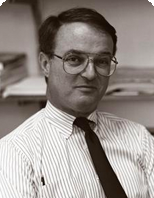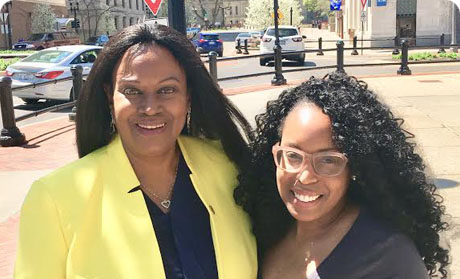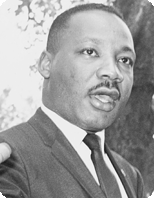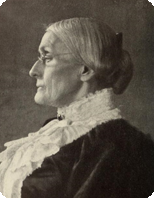
Professor Emeritus Garry D. Brewer, Yale School of Management
Former Dean of SEAS Returns to Michigan with Reflections on the Past, Present, and Future
By: Garry D. Brewer
The School of Natural Resources (and Environment after 1992) has a long and distinguished history. It is perhaps the oldest public natural resources professional school and program in America. Only Yale’s School of Forestry, in the private sector, has similar longevity.
For many different and complex reasons, SNR had fallen on hard times in the late 1980s. State funding for its public universities was falling dramatically which resulted in both great financial and operational stresses but also a need in the short term to selectively weed out programs, departments, and even schools to preserve core strengths. A dramatic effort at the U of M to wage a unique fund-raising campaign of some $1.2+ billion dollars developed to shore up long term and independent financial foundations. “Hard times” for SNR meant faculty, staff, and other reductions. It also meant a serious discussion among Regents to simply close the place down.
However, with the imminent capital campaign getting underway several of the Regents, along with President Jim Duderstadt and Provost Gil Whitaker, decided in 1991 to give SNR a three to five year reprieve so it might find new directions to revitalize.[1] I was honored to be invited to take on these responsibilities in summer 1991 and became the Dean of SNR in January 1992. My family and I moved to Ann Arbor in August to settle in and also to give me several months to figure out what might be done in the “new directions” department.
It didn’t take long to see the enormous potential and to develop a plan and strategy for renewal. Having wonderful support from the top leadership of the university and also from many new dean colleagues was crucial, and it was given often, constructively, and with good effect. Coming to Lansing for your [Wolverine Caucus] event was one of the earliest public airings of “New Directions.”
Four or five interrelated substantive areas emerged. Each eventually developed and evolved over the following capital campaign and ever since.
- Business and Environment
- Pollution Prevention/Sustainability
- Ecosystem Management
- Environmental Education
- Landscape Restoration
Business and the Environment built on work I started at Yale University in 1985 with the creation of a joint degree between the School of Organization and Management and the School of Forestry and Environmental Studies—a three-year program yielding an MBA and one of several professional resources masters degrees.[2]
Michigan’s premier university had an equal chance to offer comparable opportunities to its young leaders, and CEMP aimed to provide them. The core idea of CEMP, for Corporate Environmental Management, was to create as many opportunities as possible for emerging business and environmental leaders to learn, work, and share together “in the classroom, not the courtroom,” as the banner for the program stressed. Dean Joe White in the Business School was a tremendous booster of this initiative. He introduced me to several of his prime alumni donor prospects with interests in environmental and management issues and values. He invited me to deliver the 25th annual prestigious McInally Lecture to make the case for joining business and environment constructively, which I did in “A Time for Creative Coexistence.”[3]
Early support and validation for the core ideas of CEMP came from JoAnn and Stuart Nathan (BSES ’62 and BBA ’62, respectively) in the form of funds for the CEMP Initiative Lectureship Fund which brought corporate and environmental leaders to Ann Arbor to share their own experiences bridging the gaps between two such different worlds. I still remember JoAnn’s reaction when I described CEMP to her and Stuart: “That sounds just like our marriage!” He is a successful real estate developer and she is a landscape preservationist. Their enthusiasm at the early stage provided a critical boost to CEMP and several other of the New Directions. For CEMP this meant endowment funds to create the Max McGraw Chair between the School of Natural Resources and Environment (SNRE) and the Business School. For a newly emerging National Pollution Prevention Center within SNRE, this meant potential longer term and sustainable linkages once its initial five-year grant ended.
The National Pollution Prevention Center (NPPC) emerged from a national competition US EPA had initiated in 1990-91. The nascent field now known as industrial ecology focused on the prevention of pollution, but offered even more ambitious prospects now being realized in what is called “sustainability.” Professor Jonathan Bulkley of SNRE was an environmental engineer with a particular skill in seeing the full picture here. His young protégé and co-principal investigator, Greg Keoleian, was a recent U of M Ph.D. in engineering who possesses enthusiasm and exceptional skill in joining engineering to environmental purposes and goals. SNRE became a world-class player in all matters “sustainable” largely based on this initiative and subsequent developments thus enabled.[4]
Ecosystem Management, the third New Direction, meant to take advantage of powerful intellectual currents flowing to reimagine and reinvent traditional disciplinary approaches of the sort structuring professional and management natural resources education and research. Focusing on trees or fish or bears and so on to the exclusion of where they and lots of other living things coexist was of course necessary, but it is also totally insufficient. The bigger picture(s) demanded by the ecosystems management approach stress this. Human beings, incidentally, are central and critical elements in all ecosystems, although this “human dimension” had long been overlooked or neglected in more traditional approaches.
William Searle, a U of M grad and also a successful pharmaceutical executive, had long appreciated many of the key ecosystem ideas because of his hunting and fishing passions. Or, as he once told me in more or less these terms, “If we don’t take care of these places and animals, there won’t be anything left to hunt or fish.” The same sentiment was earlier expressed by President Theodore Roosevelt and is manifest in his pioneering work to establish national parks, forests, and other protected places. Bill Searle and his family funded and so created the “TR Chair in Ecosystems Management,” possibly the first of its kind at any American university.
Environmental Education, typically focused on school-aged kids, had received federal attention and assistance with legislation in 1972. The US Department of Education had tried lots of different approaches, models, and methods but had not figured out what worked well and why. A national competition to help resolve some of these problems resulted in 1991 with the $5 million award to SNR to create the National Center for Environmental Education and Training (NCEET) for a five-year period. Professor William Stapp, a beloved SNR faculty member and pioneer in what is now called “experiential environmental education” took the lead here. Of course environmental education became a new direction, and several corporate leaders, including General Motors, responded generously to assist us.
Landscape Restoration is at first glance an unlikely new direction, although on further inspection it turns out to be a unique strength to develop. The School of Natural Resources uniquely houses a substantial program in landscape architecture, granting professional degrees in landscape architecture as well as a doctoral, Ph.D. program in the subject.[5] Besides providing assistance to LA, as these programs are called, I saw the possibility of merging many of its intellectual and professional strengths with other new directions in business and environment, ecosystems, and ultimately sustainability.
Because no other unit at the U of M had taken major responsibility for a technical measurement field known as Geographic Information Systems (GIS) I was able to convince both Jim Duderstadt and Gil Whitaker that a neutral “country” in the larger campus world might operate as an honest broker, on the lines of Switzerland, to provide a focus and training/research facility for everyone on campus. With help from several other deans, who had not be able to “take over” themselves, this compromise was accepted and fulfilled as the campus-wide GIS Laboratory in the Dana Building, SNR’s home.
Comparable cooperative arrangements with several other schools and departments also helped put SNR (by then SNRE) back on track as a key player in all things environmental/sustainable. The most substantial of all these was the wonderful initial gift of $5 million from Fred and Barbara Erb and their children to create the Erb Institute for Environmental Management, now grown into a world-class leader in all things “sustainable.”
The Erb Institute is in many ways the best possible destination for all the little seeds and hopes I planted when talking to everyone in Lansing so many years ago. I thanked you at the time for the opportunity to share the hopes and promises, and I wish to thank you again for being part of a wonderful Michigan story.
Go Blue!
Garry Brewer
Suttons Bay, MI
[1] Philip Power, Paul Brown, and Shirley McFee in particular provided critical support.
[2] Master of Environmental Science, Master of Environmental Management, Master of Forestry
[3] “Business and the Environment,” Dividend (Fall 1992): 19-30.
[4] Keolian is a now a full professor and a leader in the Erb Institute for Sustainability.
[5] Harvard University is one of the very few institutions granting Ph.D. degrees, and its programs are not located in a professional natural resources school.





